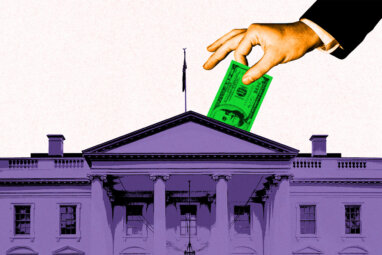The Long Tail of Social Media Influence
Paid influencers with the biggest follower counts may not give companies the most bang for their buck, research finds.
Topics
Radar

Getty Images
The top social media influencers command top dollar for their endorsements: Italian super-influencer Chiara Ferragni was said to have been paid 1 million euros ($1.07 million) to promote a holiday cake to her followers.
Marketers may assume that paying heavily to place their products into the exquisitely curated digital lives of Ferragni and her ilk is a winning social media strategy. Surely the influencers with the largest follower counts will deliver the best results, right? But new research indicates that social media power isn’t all at the top — and marketers might see a better return on investment in paid influence campaigns if they recognize that.
In their November 2023 Journal of Marketing paper, “Revenue Generation Through Influencer Marketing,” a team of scholars — Maximilian Beichert, Andreas Bayerl, Jacob Goldenberg, and Andreas Lanz — explored whether marketers should target influencers with a large number of followers or those with relatively few. They did so by weighing the results of influencers’ social media posts on networks such as Instagram — including how many followers the posts reached, engagement levels, and revenue earned — against the cost of paid endorsements.
New research indicates that social media power isn’t all at the top.
The researchers drew on secondary sales data of 1,881,533 purchases and the results of three field studies with hundreds of paid influencer endorsements. They found that influencers with lower follower counts (referred to as nano-influencers) delivered dramatically better per-follower returns on marketing investments than macro-influencers — that is, those with a high number of followers. Macro-influencers in the researchers’ data set had 32 times more followers but generated only about four times as much revenue compared with nano-influencers.
The finding is not so counterintuitive once engagement is factored in. The researchers posited that macro-influencers would have less engagement with their followers, as measured in followers’ likes, shares, and comments on posts and influencers’ responses to followers’ comments. To evaluate the level of engagement between influencers and followers, the researchers looked at influencers’ five most recent social posts before the paid post. They found that follower engagement was an order of magnitude higher for nano-influencers than for macro-influencers.
Marketers who haven’t already recognized this dynamic would do well to heed the researchers’ findings and begin spreading their budgets more broadly to small-time influencers. As for Ferragni? She has bigger worries than a bunch of small-time influencers eating her lunch: She was fined 1 million euros by Italian authorities when it emerged that there was no basis to her claim that proceeds from sales of that Christmas cake would go to a children’s hospital.









Comment (1)
omar ferrer